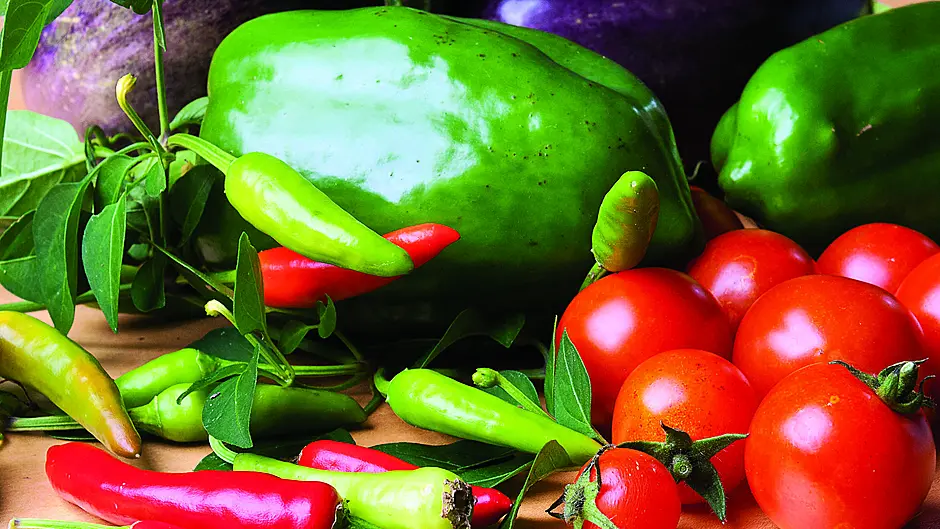IT can be a real mix of summer and winter crops inside the greenhouse and polytunnel at this time of year.

The summer crops are looking pretty tatty and the winter ones are growing and competing for space.
Be sensible about what you choose to do next. There is still time to get some late sowings in and there is definitely time to put in some small plants.
If space is needed for starting spring crops then harvest some of the more tender crops.
Peppers and aubergines won’t grow much more and cucumbers really have reached their end.
Some tomato plants may have more mouldy leaves than healthy ones, although some plants can continue to crop for a few more weeks yet.
Cast a critical eye and lift plants that are really past their best. You can enjoy the last of their summer harvest.
Remove any diseased leaves and fruits that have fallen to the ground and dig the bed over, or mulch heavily, and provide a bit of feed.
You will be able to enjoy the clear space or anticipate the rows of winter and spring leaves that it will help to generate.
Some maintenance
If we haven’t had strong winds so far then we are certainly due some soon.
Make sure to check all windows and doors on garden structures.
These should have strong latches so they don’t blow open in a storm.
Check for broken panes, or tears in polythene, which may cause problems in a high wind.
You can buy strong repair tape that will firm up a crack or repair a rip.
It’s also good to remove overhanging branches that might damage the structure if they hit against it.
Flowers and bulbs
Some plants seem to have had a particularly long flowering season and the border still has some colour.
Make a note of which plants you like and which are still flowering well – you may want to buy more of the same to flower next year. Anything that provides colour well into the autumn is to be welcomed.
And don’t leave it too late to buy some spring flower bulbs.
There will be less choice as favourites are snapped up. There’s still plenty of time to plant tulips; daffodils will do well if they are got into the ground now. Don’t leave it much later or the ground may get too cold and wet before the bulbs settle in.
I like to grow bulbs in containers for their first year – they do particularly well in a sheltered position and provide lots of colour.
The bulbs go into the garden for subsequent years.
 Plant a container with tulip bulbs.
Plant a container with tulip bulbs.
A word on birds
Brassicas are doing particularly well this year.
The caterpillar invasion seems to be over and growing conditions have suited plants well.
The next thing to do is to protect your sprouts, broccoli and cabbages from birds.
Pigeons will peck away at leaves and can spoil a whole stem of sprouts. They don’t tend to do this until the weather gets cold and food is scarce, but they can be very destructive in a short space of time.
You can cover plants with light netting – this should be supported and held down well.
My preference is for plastic drink bottles on the end of canes pushed into the ground near susceptible plants. The bottles rattle in any puff of wind and the noise frightens birds away.
You can also use glitter strips, or flappers, or twirling strings of bottle tops – anything that provides enough movement or noise to keep pigeons away.
Kale plants don’t seem to be as attractive as other brassicas and these plants don’t suffer bird damage in my garden.
Still some fruit
Autumn fruiting raspberries may come in smaller numbers than their summer cousins – remember to pick regularly and you can enjoy a little and often crop for a few more weeks.
Pick any remaining apples before they fall from the trees.
The end of October is really the latest that you should still be harvesting apples. Fruits suffer damage from birds and from wasps – you may not mind sharing if you have had a bumper crop.
Time to sow
You can still sow some seeds in a greenhouse or polytunnel up until the end of the
month.
Try winter turnips, early beetroot, spinach beet, winter lettuce, rocket, purslane, cress and mustard greens.
Try a few early carrots, in a pot under horticultural fleece, if you can protect them from slugs, and you can still get spring cabbage into the ground if you can buy some healthy young plants.
Some of these will do better than others and a lot depends on the sort of winter we get.
It’s always worth trying a few sowings if you have space to grow them, even if some work out better than others.
 Lavatera can flower right through the autumn.
Lavatera can flower right through the autumn.







